Προϊόντα
Δημοφιλή Προϊόντα
-
CASIO GP-310BKC7 HYBRID ΠΙΑΝΟ ΗΛΕΚΤΡΙΚΟ
Το υψηλής ποιότητας υβριδικό πιάνο, CELVIANO Grand Hybrid GP-310 – κατασκευασμένο σε συνεργασία με την C. Bechstein – αναπαράγει ακόμα και τις πιο λεπτές εκφάνσεις που χαρακτηρίζουν τον ήχο παγκοσμίως διάσημων grand pianos.
€3.200,00€3.500,00CASIO GP-310BKC7 HYBRID ΠΙΑΝΟ ΗΛΕΚΤΡΙΚΟ
€3.200,00€3.500,00Άμεσα Διαθέσιμο
-
IGS AUDIO ONE LEVELING AMPLIFIER OPTICAL COMPRESSOR
One Leveling Amplifier
€1.700,00€1.900,00IGS AUDIO ONE LEVELING AMPLIFIER OPTICAL COMPRESSOR
€1.700,00€1.900,00Διαθέσιμο σε 7-15 ημέρες
-
IGS AUDIO V8 COMPRESSOR
Smooth and gentle compression
€2.900,00€3.100,00IGS AUDIO V8 COMPRESSOR
€2.900,00€3.100,00Διαθέσιμο σε 7-15 ημέρες
-
IGS AUDIO MULTICORE MULTIBAND COMPRESSOR
Three bands of classic analog VCA compression provide an infinite field of possibilities to shape the sound.
€3.550,00€3.700,00IGS AUDIO MULTICORE MULTIBAND COMPRESSOR
€3.550,00€3.700,00Διαθέσιμο σε 7-15 ημέρες
-
IGS AUDIO VOLFRAM LIMITER STEREO FET COMPRESSOR
The Volfram Limiter is a dual mono version of the legendary 1176 archetype.
€2.000,00€2.200,00IGS AUDIO VOLFRAM LIMITER STEREO FET COMPRESSOR
€2.000,00€2.200,00Διαθέσιμο σε 7-15 ημέρες
-
IGS AUDIO ZENER DIODES MASTERING COMPRESSOR
That’s all you need to compress your mix.
€2.900,00€3.100,00IGS AUDIO ZENER DIODES MASTERING COMPRESSOR
€2.900,00€3.100,00Διαθέσιμο σε 7-15 ημέρες
-
€23,50
€26,10Διαθέσιμο σε 1-3 ημέρες
-
Debussy – Pour Le Piano
State-of-the-Art Bärenreiter quality Urtext
Performer information on Aesthetics i.e. pedalling, tempo, articulation, dynamics
Critical report (Eng.) and Facsimile
Little is known about the origins of Debussy’s Pour le piano, only that the second movement Sarabande was written in 1894 and that the autograph carries the clear inscription »1901«.
As with the Suite bergamasque, Pour le piano was published first by Fromont in 1901, although Debussy did not grant him the full rights to the composition until 1905. This delay had most certainly to do with Debussy’s efforts to have Fromont transfer the rights to Pelléas et Mélisande to his new exclusive publisher Durand; in other words, Fromont was to own Pour le piano only if Durand owned Pelléas.
Bärenreiter’s new critical scholarly edition edited by Regina Back relies on all known sources, documenting the genesis of the composition, provides a detailed Critical Commentary and enlightens with its text passages on performance practice and Debussy’s piano music.
Einführung:
Entstehungs- und Pubikationsgeschichte
Zum Werk
Ästhetik und Aufführungspraxis
Zur Edition
Die Quellen
Übersetzung der Spielanweisungen
Introduction:
Genesis and Publicatin History
The Work
Aesthetics and Performance Practice
Notes on the Edition
The Sources
Translation of Performance Instructions
Introduction:
Genèse et historique de la publication
L’Œuvre
Esthétique et traditions d’exécution
Notes sur l’edition
Sources
Faksimile / Facsimile / Facsimile
Anhang / Appendix / Appendice
Critical Commentary€8,40€9,30Debussy – Pour Le Piano
€8,40€9,30Διαθέσιμο σε 1-3 ημέρες
-
Rossini – The Barber of Siviglia
With the arrangements for the woodwind quintet begins a series of arrangements for instrumentation which, due to the variety of sounds and possible variations of its five different instruments, seems predestined to make works of this type accessible to chamber music as well.This series follows in the tradition of countless contemporary arrangements, such as the Harmoniemusic, created in part by the composers themselves, only now for a scoring brought to life by Czech-born French composer Anton Reicha in the early 19th century and only achieved its current level of virtuosity with the invention of the valve horn.€18,00Διαθέσιμο σε 1-3 ημέρες
-
Barenreiter Mozart – Symphony for woodwind quintet in G minor, K. 550
The arrangement of Mozart’s Symphony in G K. 550 includes all four movements and is ideally suited to the five instruments – flute, oboe, clarinet, horn and bassoon – of the classical wind quintet. The edition includes a reference score and parts.€35,70€39,70Διαθέσιμο σε 1-3 ημέρες
-
€38,50
Διαθέσιμο σε 1-3 ημέρες
-
Mozart – Sinfonia concertante in E flat major KV Anh. I/9 (297b)
We know from letters to his father that during his stay in Paris in 1778 Mozart wrote a Sinfonia concertante for flute, oboe, horn, bassoon and orchestra for a quartet of wind soloists who were also there – Mozart’s autograph was lost, the work is missing.In the 19th century, a copy of a Sinfonia concertante in E-flat for oboe, clarinet, horn, bassoon and orchestra appeared, for which Mozart’s authorship was claimed and which – despite the different instrumentation of the wind quartet – was linked to the Sinfonia concertante, which was believed to be lost has been brought. For a long time, the work was considered genuine, but vehement doubts have been raised about its authenticity for around 25 years, which relate not only to the scoring of the soloist quartet but also to the orchestral parts.Robert Levin’s reconstruction is based on the assumption that the setting of the solo parts is genuine in its germ and has been re-instrumented by a foreign arranger (flute to oboe, oboe to clarinet). Levin considers the orchestral parts to be fake. In his reconstruction, Levin restored the instrumentation of the soloist quartet with flute, oboe, horn and bassoon mentioned in Mozart’s letters and rewrote the orchestral parts. Thorough analysis of Mozart’s style and an intimate knowledge of Mozart’s writing enabled Levin to take the risk of this reconstruction. It is available as rental material (BA 7137) and is part of the popular repertoire of solo wind instruments.€25,00€25,60Διαθέσιμο σε 1-3 ημέρες
-
-
Mozart – Quintet in A major KV 581 “Stadler Quintet”
Pages; 8/8/8/8/7€17,80€19,80Mozart – Quintet in A major KV 581 “Stadler Quintet”
€17,80€19,80Διαθέσιμο σε 1-3 ημέρες
-
Mozart – Concerto No. 11 in F major K. 413
“Mr Kapellmeister Mozart hereby announces to the distinguished audience the publication of three new piano concertos. These 3 concerts, which can be performed with a large orchestra with wind instruments or only a Quattro, namely with 2 violins, 1 viola, and a violoncello, will not be performed until the beginning of April this year. J. (1783) come to light …” This advertisement shows that Mozart wanted to keep the accompaniment apparatus flexible in the piano concertos KV 413-415 (and KV 449, as we know from a letter from Mozart to his father). In addition to the large orchestral scoring, a piece of pure chamber music scoring with simply scored strings is also possible.The edition takes this into account: on the one hand, it enables the performance of the works in the large orchestral sound form, but on the other hand, enriches the attractive group of works of chamber music with piano.€31,50Διαθέσιμο σε 1-3 ημέρες
-
Mozart – Concerto No. 14 in E flat major KV 449
“Mr Kapellmeister Mozart hereby announces to the distinguished audience the publication of three new piano concertos. These 3 concerts, which can be performed with a large orchestra with wind instruments or only a Quattro, namely with 2 violins, 1 viola, and a violoncello, will not be performed until the beginning of April this year. J. (1783) come to light …” This advertisement shows that Mozart wanted to keep the accompaniment apparatus flexible in the piano concertos KV 413-415 (and KV 449, as we know from a letter from Mozart to his father). In addition to the large orchestral scoring, a piece of pure chamber music scoring with simply scored strings is also possible.The edition takes this into account: on the one hand, it enables the performance of the works in the large orchestral sound form, but on the other hand, enriches the attractive group of works of chamber music with piano.€31,50Διαθέσιμο σε 1-3 ημέρες
-
Mozart – Piano Concert In C Maj Kv 415
“Mr Kapellmeister Mozart hereby announces to the distinguished audience the publication of three new piano concertos. These 3 concerts, which can be performed with a large orchestra with wind instruments or only a Quattro, namely with 2 violins, 1 viola, and a violoncello, will not be performed until the beginning of April this year. J. (1783) come to light …” This advertisement shows that Mozart wanted to keep the accompaniment apparatus flexible in the piano concertos KV 413-415 (and KV 449, as we know from a letter from Mozart to his father). In addition to the large orchestral scoring, a piece of pure chamber music scoring with simply scored strings is also possible.The edition takes this into account: on the one hand, it enables the performance of the works in the large orchestral sound form, but on the other hand, enriches the attractive group of works of chamber music with piano.€29,50Διαθέσιμο σε 1-3 ημέρες
-
Mozart – Piano Concert In A Maj Kv 414
“Mr Kapellmeister Mozart hereby announces to the distinguished audience the publication of three new piano concertos. These 3 concerts, which can be performed with a large orchestra with wind instruments or only a Quattro, namely with 2 violins, 1 viola, and a violoncello, will not be performed until the beginning of April this year. J. (1783) come to light …” This advertisement shows that Mozart wanted to keep the accompaniment apparatus flexible in the piano concertos KV 413-415 (and KV 449, as we know from a letter from Mozart to his father). In addition to the large orchestral scoring, a piece of pure chamber music scoring with simply scored strings is also possible.The edition takes this into account: on the one hand, it enables the performance of the works in the large orchestral sound form, but on the other hand, enriches the attractive group of works of chamber music with piano.€29,50Διαθέσιμο σε 1-3 ημέρες
-
Meyerbeer – Quintet in E flat major
The source-critical edition is the first edition of the clarinet quintet, which was lost after the Second World War; it was only recently found in the estate of the clarinettist Carl Bärmann. Meyerbeer wrote this quintet in Vienna in 1813 for his friend, the celebrated clarinettist Heinrich Bärmann, to whom CM von Weber also dedicated a number of compositions. The virtuosic treatment of the clarinet is new and unusual for the time. Meyerbeer allows them to emerge clearly from the strings, almost reaching the limits of their technical possibilities. Meyerbeer’s clarinet quintet enriches the already sparse literature for clarinet in the field of chamber music in the 19th century. The scientifically critical edition makes this masterpiece accessible for practice for the first time. In addition to the pure musical text, it offers a detailed foreword that introduces the history of the work, as well as a critical report. Dieter Klöcker set up the voices for practical use.€28,50Διαθέσιμο σε 1-3 ημέρες
-
Haydn/Salomon – Symphony in D major Hob. I:104 “Londoner”
A good 200 years ago in London, Johann Peter Salomon made five-part arrangements for flute, string quartet and piano ad libitum of Haydn’s 12 London symphonies. The distribution of the arrangements was enormous. Reprints in England and other European countries attest to their popularity. Salomon had been able to close a gap in the chamber music repertoire.Christopher Hogwood presents here a new edition of the arrangement of Symphony No. 104. The basis is Salomon’s original manuscript, which was found a few years ago.€38,00Διαθέσιμο σε 1-3 ημέρες
-
Haydn/Salomon – Symphony Quintetto in C major Hob. I:97
Only a few years after Joseph Haydn’s twelve “London” symphonies were written, Johann Peter Salomon (1745–1815) published ad libitum arrangements of these works for flute, string quartet and piano for the first time. Numerous reprints in Europe indicate the extraordinary success of these arrangements in the 19th century. Based on Salomon’s original manuscript, Christopher Hogwood now presents a new practical edition of the arrangement of Symphony No. 97. This and the three six-part arrangements that have already been published enrich the chamber music repertoire and are likely to be as popular today as they were in the 19th century.€38,00Διαθέσιμο σε 1-3 ημέρες
-
Grieg – Peer Gynt Suite No. 1 Op. 46
Since Grieg’s Peer Gynt Suite No. 1 was first performed in 1876, this work has become one of the most performed of the Romantic period. It was not long before the suite was arranged for other ensembles. The present arrangement of four movements for the woodwind quintet does justice to Grieg’s sound world by bringing out the subtle nuances of the five very different instruments. Included, of course, are “Morning,” “Aase’s Death,” “Anitra’s Dance,” and the suite’s centrepiece, “In the Hall of the Mountain King.”€32,50Διαθέσιμο σε 1-3 ημέρες





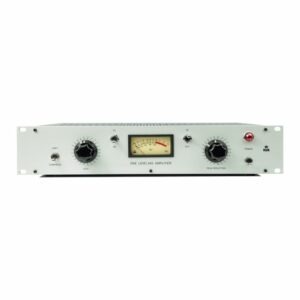
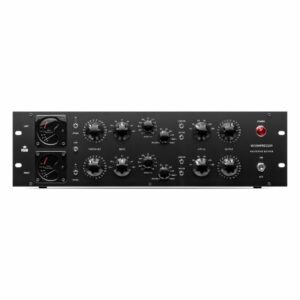
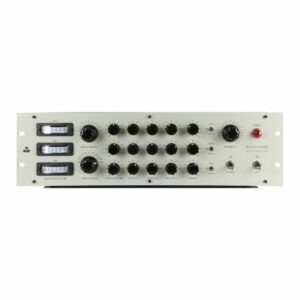
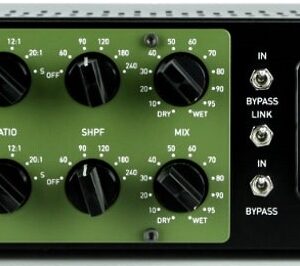
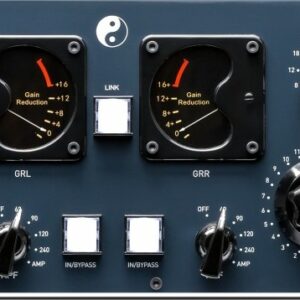







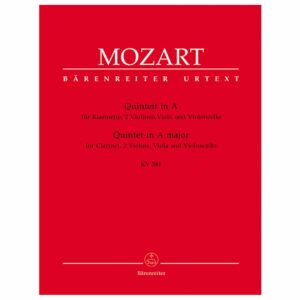


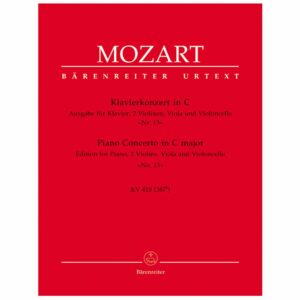




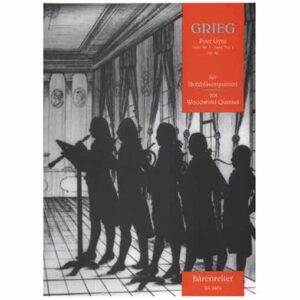
Two of Mendelssohn’s famous piano albums, with pieces of easy to medium level of difficulty
Urtext edition reflecting the latest research findings
Different versions are taken into consideration
Critical Commentary and detailed foreword (Ger/Eng)
The “ Charakterstücke op. 7” and “ Kinderstücke op. 72” are Mendelssohn’s most popular piano albums besides his “Lieder ohne Worte ” and the “Variations sérieuses op. 54”. Robert Schumann described the character pieces as an “interesting contribution to the development” of the “masterful youth”.
The compositions mostly dating from 1827, are essentially the result of his lessons with Carl Friedrich Zelter in Berlin. The teacher encouraged his pupil to immerse himself in the strict style of old music”, in particular Johann Sebastian Bach, but at the same time, as he himself said, confidently allowed Mendelssohn to dream of “dragons and goblins”.
In the 19th century, learning the piano was regarded as a highly desirable accomplishment. The demand for piano lessons for children led rapidly to the development of a repertoire suitable for this age-group. Albums for children were particularly popular around the mid-19th century and were popular presents for children’s birthdays, Christmas and other occasions.
Mendelssohn’s “ Kinderstücke op. 72” were published in London in 1847, the year of his death, under the title “Christmas Present for His Young Friends”.
The edition contains both piano cycles in the versions published in the first edition, and an extensive appendix also includes variants and early versions which survive in different autograph manuscripts
Content
Vorwort / Preface
Sieben Charakterstücke Opus 7 (Fassung des Erstdrucks / Version from the First Edition):
Sanft und mit Empfindung
Mit heftiger Bewegung
Kräftig und feurig
Schnell und beweglich
Ernst und mit steigender Lebhaftigkeit
Sehnsüchtig
Leicht und luftig
Sechs Kinderstücke Opus 72 (Fassung des Erstdrucks / Version from the First Edition):
Allegro non troppo
Andante sostenuto
Allegretto
Andante con moto
Allegro assai
Vivace
Anhang / Appendix:
I. Autographe Fassungen der Charakterstücke Opus 7 Nr. 1, 2 und 4 / Autograph Versions of the Charakterstücke Opus 7 nos. 1, 2 and 4:
Andante
Allegro vivace
Con moto
II. Stücke aus den Notenalben für Eduard und Lilli Benecke (1842) / Pieces from the Albums for Eduard and Lilli Benecke (1842):
1. Aus dem Notenalbum für Eduard Benecke / From the Album for Eduard Benecke:
Allegretto (op. 72 Nr. 3, Frühfassung / Early Version)
Andante
Allegro assai (op. 72 Nr. 5, Frühfassung / Early Version)
Sostenuto [Erstausgabe / First Edition]
2. Aus dem Notenalbum für Lilli Benecke / From the Album for Lilli Benecke:
Allegretto (op. 72 Nr. 6, Frühfassung / Early Version)
Andante con moto (op. 72 Nr. 4, Frühfassung / Early Version)
Andante sostenuto (op. 72 Nr. 2, Frühfassung / Early Version)
Con moto (op. 72 Nr. 1, Frühfassung / Early Version)
Critical Commentary